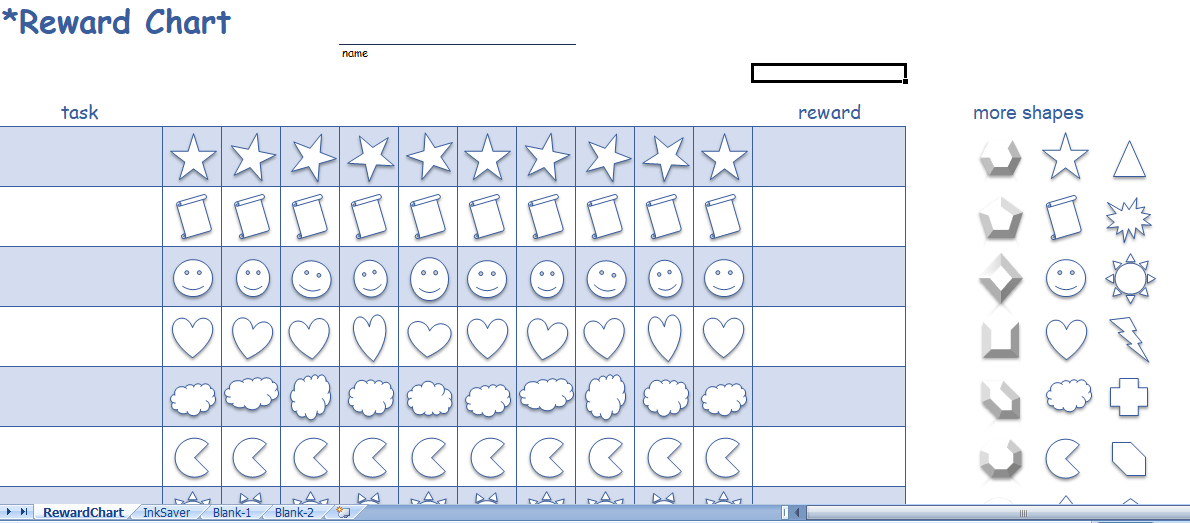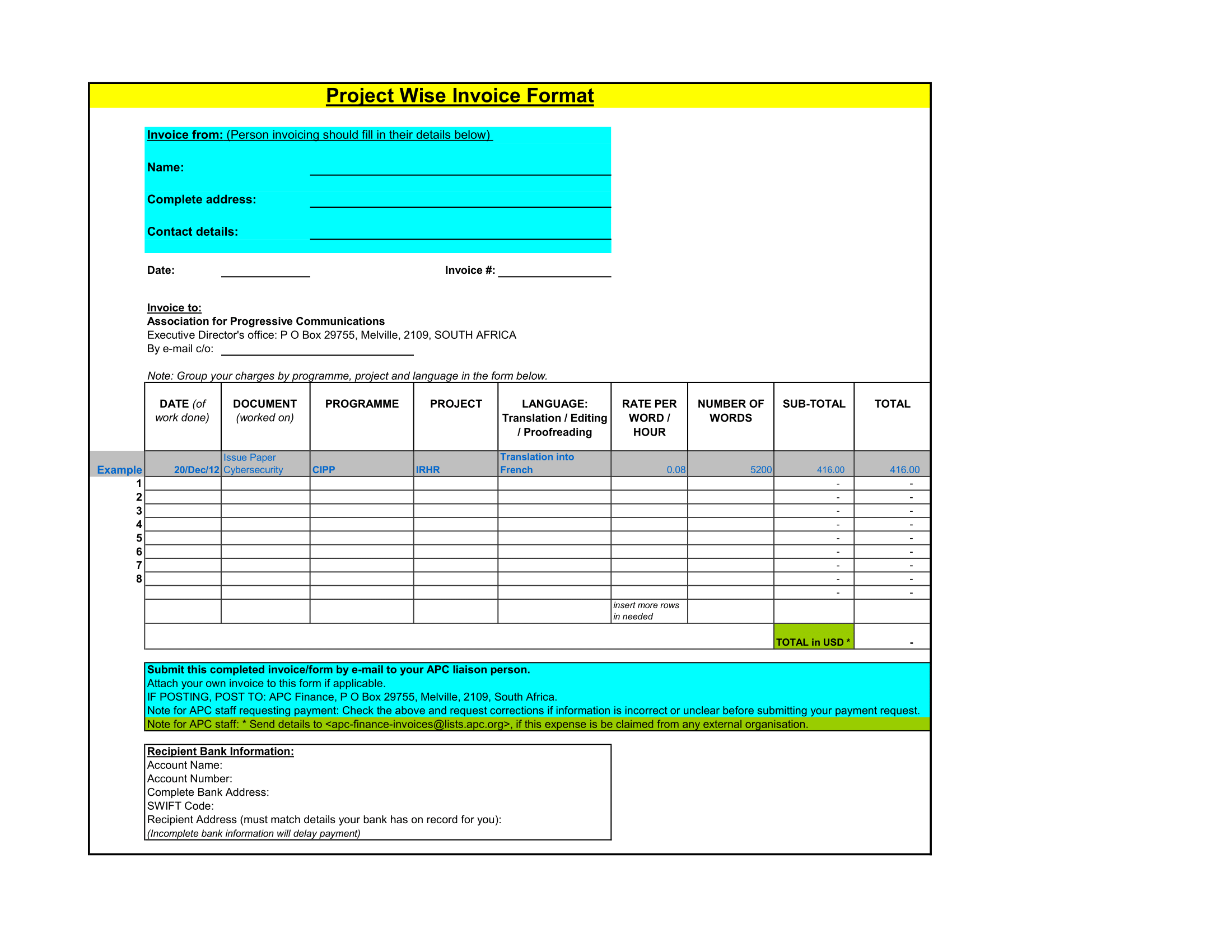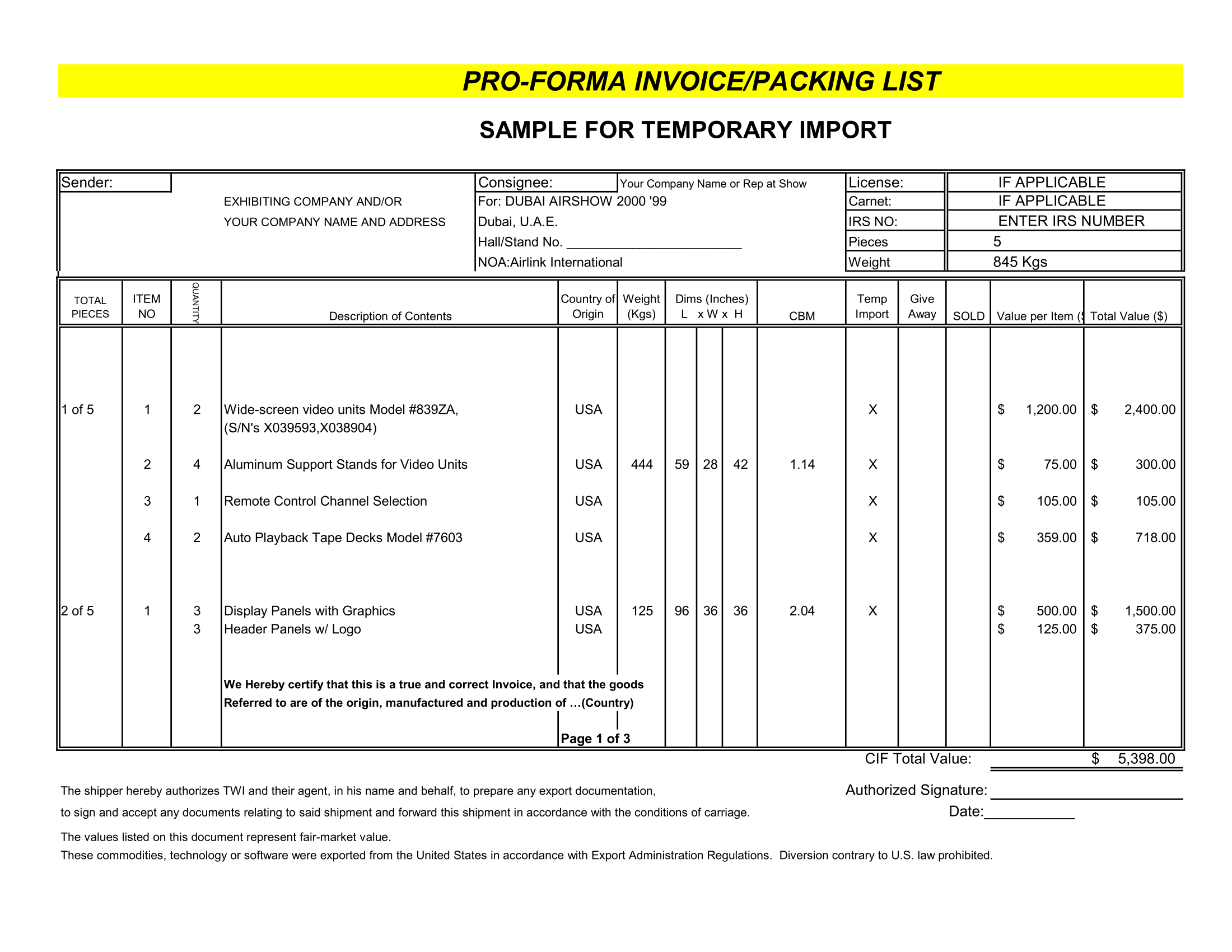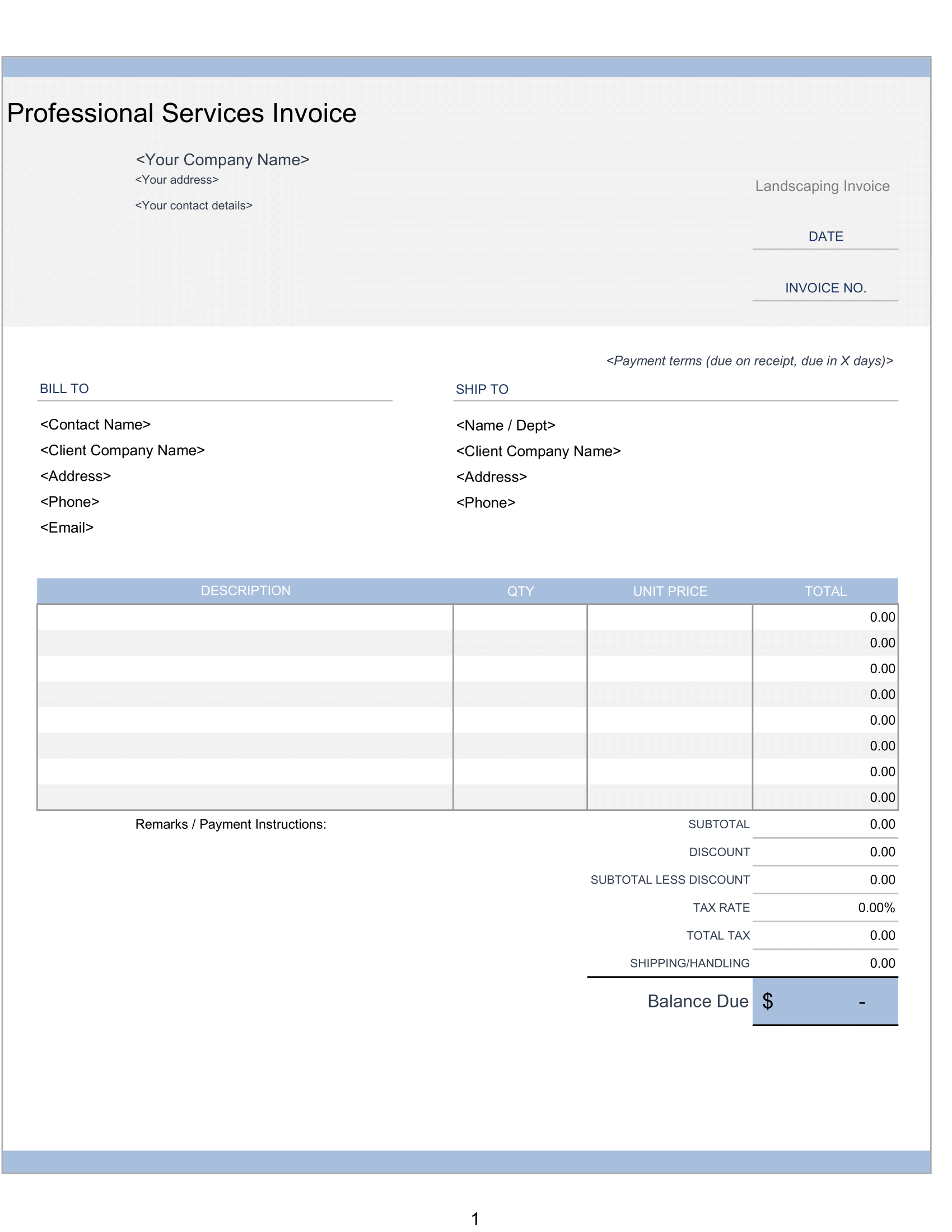A behavior reward chart or chore chart can be a great way to teach children to develop good habits and a good work ethic. Although it’s not always the only motivation required to get kids to do their chores, practice the piano, or maintain good behavior in a classroom, a behavior reward chart system is very effective. Positive reinforcement builds self-esteem and having a reward system allows you to use the threat of not getting the reward, which is more positive than the threat of punishment.
Behavior chart
I’ve created a few different reward charts below that you can customize using Excel. You can also download the PDF files to print a quick blank version. These reward chart templates are theme enabled, meaning that you can easily change the color scheme and fonts and table designs by selecting from the gallery of built-in themes and designs that come with Excel. So, if you (or your kids) don’t like the blue theme, you can change the entire color scheme within a few seconds. The weekly reward chart shows an example of using different table designs in a single reward chart.
Printable Reward Charts for Kids
The following printable reward charts and reward chart templates are for personal or educational use only, and may not be placed on the internet, resold, etc.
The spreadsheets require Excel 2007 or Excel 2010. Each of the printable PDF files contain both a color version as well as an ink-saving black-and-white version.
Behavior chart ideas
A children’s reward chart ought to be fun, and if you don’t want to use stars or stickers, you can have your child color in shapes or pictures to mark their path along the reward chart. There are numerous shapes and clip art images that you can add into your spreadsheet. You could use shapes that correspond to the task, or just use whatever fun shapes your child likes. You can also remove the existing shapes to print a blank reward chart if you want to use stickers.
Tips for Using Reward Charts
Be positive
One of the main reasons to have a rewards chart is to focus on positive rather than negative behavior. Parents and children are happier when the parents aren’t in a constant state of nagging and disciplining. This is a great chance to help kids’ esteem and be uplifting.
Keep it simple
Keeping the charts simple can help the child focus. If you have a chart with too many goals, they can lose focus. Don’t work on more than a few things with young children. As they get older you can add more goals or chores to their chart. If you don’t want to focus on rewards but still want to stay organized, check out our new chore schedule and chore chart templates.
Simple rewards keep things in perspective. The ultimate goal is to have the child feel the intrinsic motivation that comes with accomplishing work and achieving goals.
Avoid excessive rewards
Kids (and even adults) have the ability to get excited about small and simple things. The act of adding a star to the chart and receiving praise after completing a goal may be reward enough.
Pricey toys or trips or other excessive rewards will likely end up being counterproductive and teach the wrong principles. Avoid using a reward system that could lead to poor health, spoiling, unreasonable expectations, or a sense of entitlement.
Some examples of rewards stars might include a treat (debatable), an inexpensive toy, a trip to the park, extra TV time, an extra book at bedtime, a family outing like going out to eat or to a movie, a new book, etc.
Be ready
Have treats or toys ahead of time so that they can be immediate. Don’t make promises you can’t keep. This goes back to keeping it simple. If we promise our child something because we know it will motivate them, but can’t follow through because of time or money restrictions it will defeat the purpose. They will no longer believe or trust you and will not be motivated to do the rewards chart.
What ages should use rewards charts?
There are different opinions as to what ages should use rewards charts and what the rewards/activities should be. Whatever you decide, the child should be able to understand what the rewards and expectations are. If they don’t understand, they will not be motivated.
As children get older they may no longer need a special rewards chart, but checklists and calendars may still come in handy. A common age range for rewards charts are ages 3-12.
Be consistent
Kids get excited about rewards charts, but they will lose interest and motivation if parents are not consistent. Choose a specific time of day to go through the chart together. If the chart is for one specific goal (potty training for example) keep the chart where it is convenient (the bathroom in this example).
Include children
Involve the kids in choosing their goals and rewards. As the parents, you should guide them. But, if the ideas come from them they will be much more motivated. Talk together to choose a reward the whole family will enjoy together. If you use stickers, let them put their own stickers on the chart.
Have reasonable expectations
For a rewards chart to work, the child must see some success. Choose goals/chores that are age appropriate. Start more simple and challenge them as they grow and learn. Creating specific, measurable, attainable, realistic, and timely (S.M.A.R.T.) goals can help keep your child interested. Smaller children will need rewards more often, but as they grow you can expect more from them.
Be an Example
Children watch and learn a lot more than they listen and learn. If they see you cleaning, showing manners, being kind, etc. they will be more likely to follow.
Don’t use the chart for Discipline
Only use the chart to reward good behavior. When stickers or marks are taken away, the chart becomes a punishment as opposed to a reward. Find other ways to discipline that don’t involve the rewards chart.






